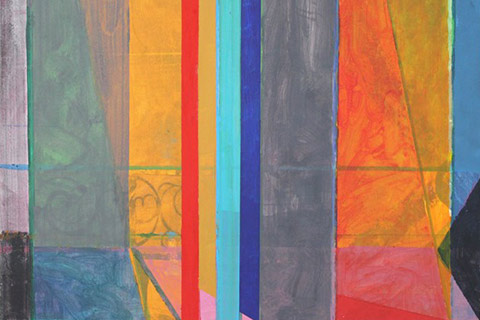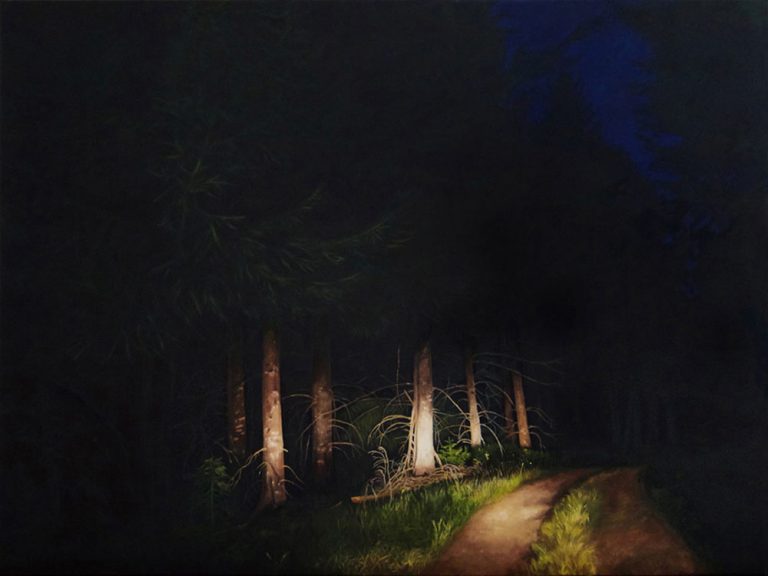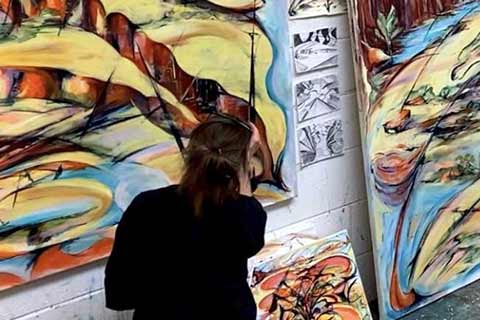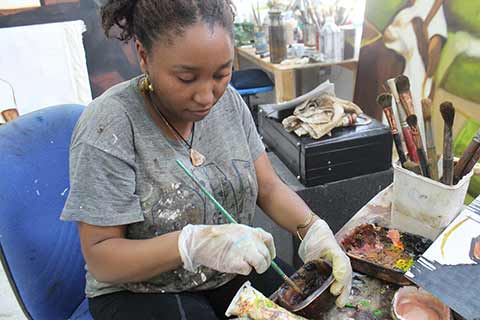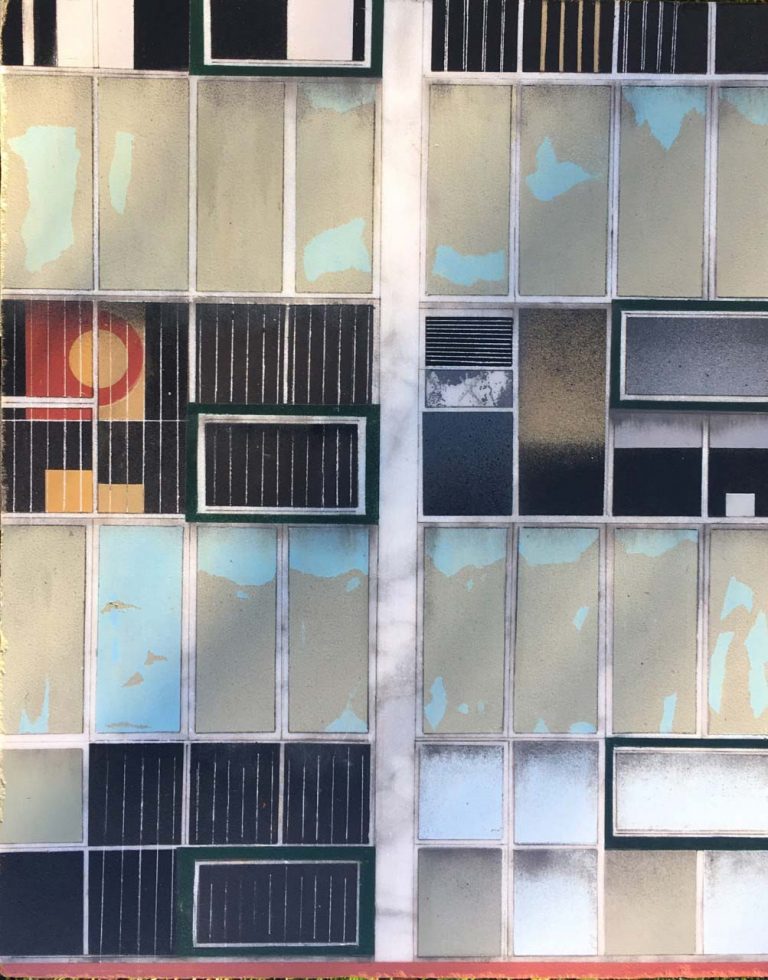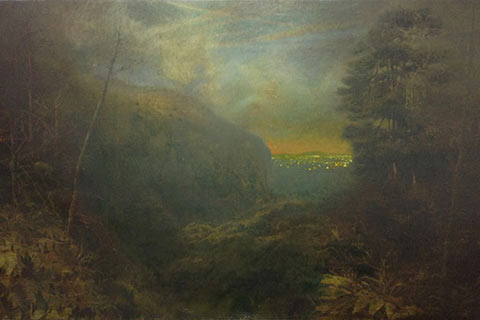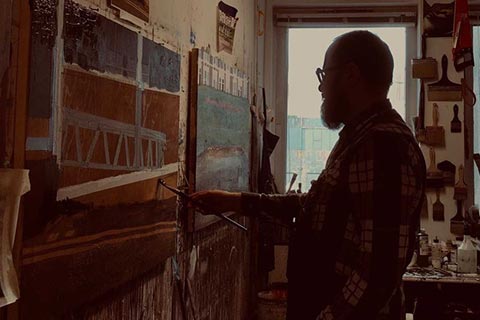Stephen Snoddy: Artist of the Month
Artist of the Month October 2022:
Stephen Snoddy, selected and interviewed by Paul Newman for CBP.
“Snoddy wants viewers to look at the relationships between his works, and how he carries lines and formats from one picture over to another. He sometimes regards two consecutive paintings as a diptych, with left and right-hand panels forming parts of a composite whole. There is an obsessive commitment to playing out endless permutations of specific forms and he goes along with an ontological methodology. The work becomes defined by its geometries, serial approach and limitless variations. In his own words, ‘The paintings often come in pairs or a small series and incorporate architectural and geometric structures with colour to get everything right – space, line, form. The final result is a balanced resolution made through corrections, revisions and re-workings.’…
Although Snoddy’s art is fundamentally abstract, it includes a fascinating range of references to the visible world. Architecture can be counted among them, partly because he sees himself building the internal scaffolding of his paintings as the work proceeds and he has always wanted his paintings to possess a strong internal order.”
Abridged from Richard Cork catalogue text, ‘Looking Out’. Brussels 2016
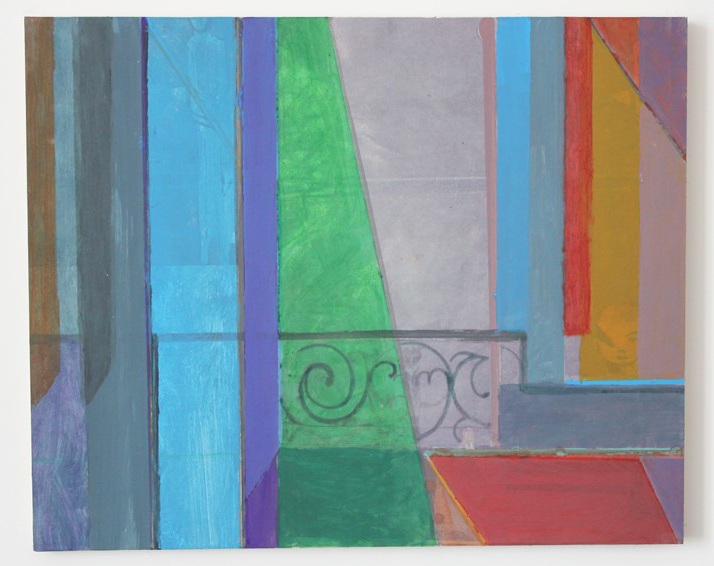
CBP: Structure and architecture are two words that come to mind when encountering your work. There is a fluid evocation of divisions found in both interior and exterior spaces. Can you talk about how you articulate these types of spaces in your painting?
SS: The question I often ask myself is: Are you on the inside looking out or the outside looking in? I am always thinking about the history of painting and the window motif is something I have always referred to and utilised. My work always has an internal structure that seems ‘right’ and everything has to be held together. I like formal ambiguity and also work that contains pictures within pictures, for example Las Meninas, Valezquez – which in my opinion is one of the greatest paintings of all time. It is complex, enigmatic, poses questions on reality and illusion. Something always to aim for.
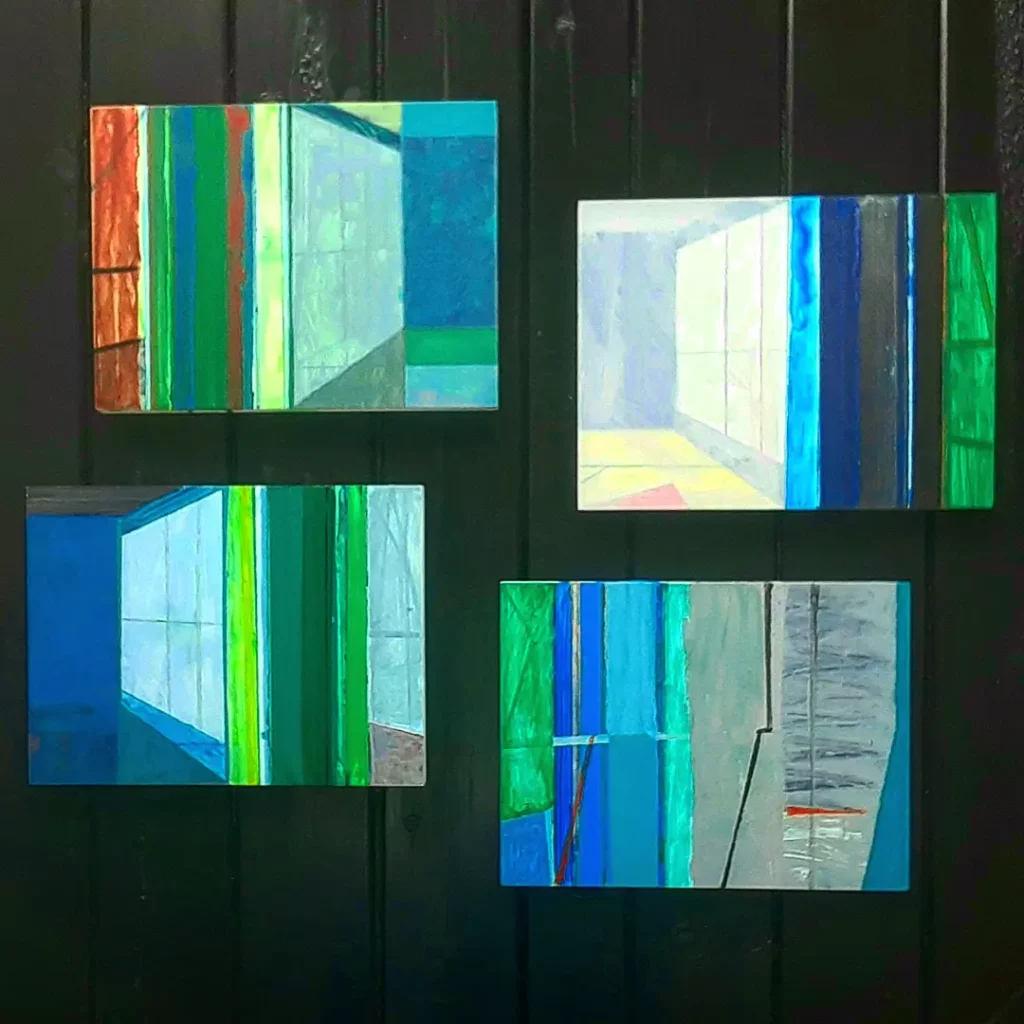
CBP: The notion of interior could refer to the interior of the mind, a painting as a work of imagination with a particular psychological charge, is this an aspect you can relate to in your painting?
SS: No not really. I am concerned with formalism and how all the elements of line, structure and colour work together to make a work complete.
CBP: There’s nothing hard edged in your painting. Nuanced colour and form relationships are explored through layered transparencies, revealing the histories of the painting and the sensitivity of where edges meet. Can you talk about your approach gesture and mark making that gives your painting its particular physical identity?
SS: I normally work on about 4 paintings together in a series. I often begin by making the surface a mix of quickly painted colours, without thinking about it too much. I then build up a structure of painted coloured lines, made by using wooden batons as rules which retain the hand drawn qualities and also leave bleeds and blotches. I use paper to act as a mask (occasionally masking tape if I want a sharp edge) to block in colour and I am aware that I want to leave traces, ‘palimpsests’, of the process to make the ‘history’ of the production of the painting visible. I want the viewer to look at the paintings closely and become involved in its process.
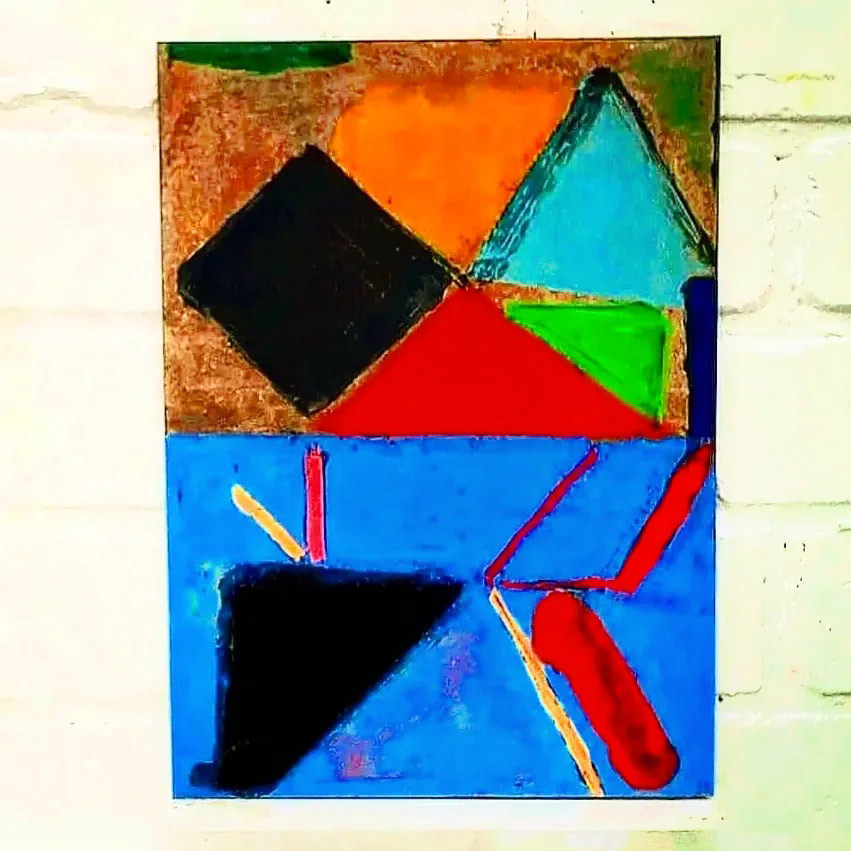
Pastel 86, pastel on paper, 33 x 24cm, 2021 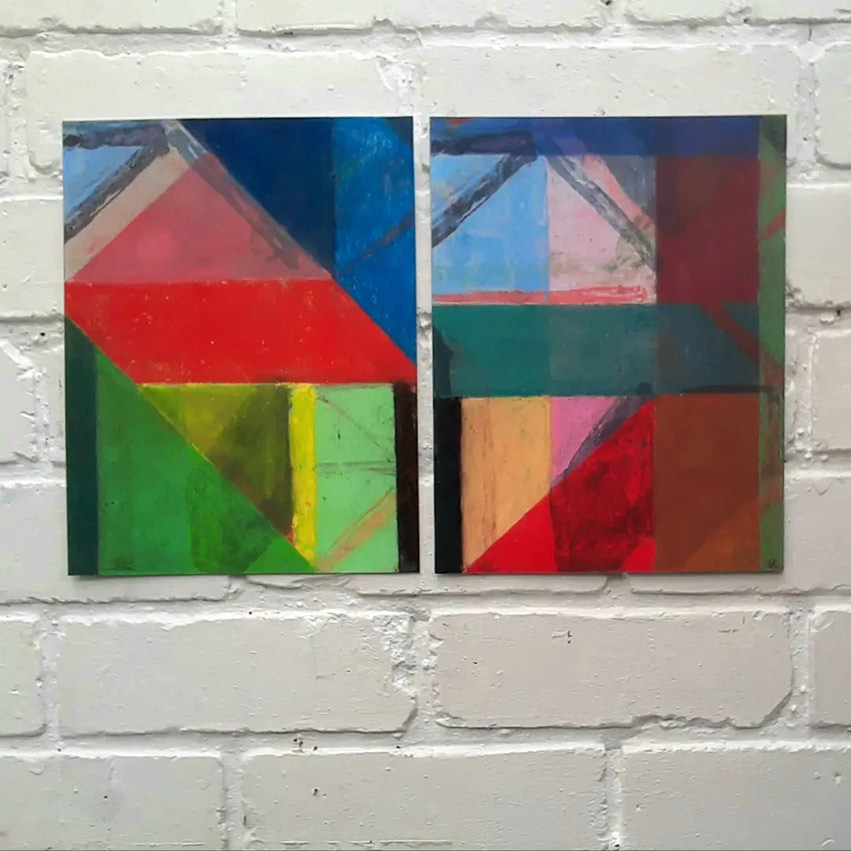
Pastels 93 & 94, pastel on paper, 27.5 x 21.5cm, 2021
CBP: You reference Matisse in several of your works. Can you talk about the referencing of painting in your own work? And are there other art or cultural influences explored within your painting?
SS: Yes in 2017 / 18 I made 27 paintings in ‘Homage’ to Matisse reworking paintings from his 2014 – 18 ‘means of production’ period where he retained his corrections, revisions and ‘mistakes’. I wanted to tackle them head on and see what happened and be up front about their ancestry. I also admire Richard Diebenkorn in particular his ‘Ocean Park’ series which he made in the 1970s and 1980s. They are the sort of paintings that I think Matisse might have made if he had not become wheel chair bound and then made his ‘paper cut outs’. I also look at Brice Marden across his whole oeuvre from paintings, drawings and prints.
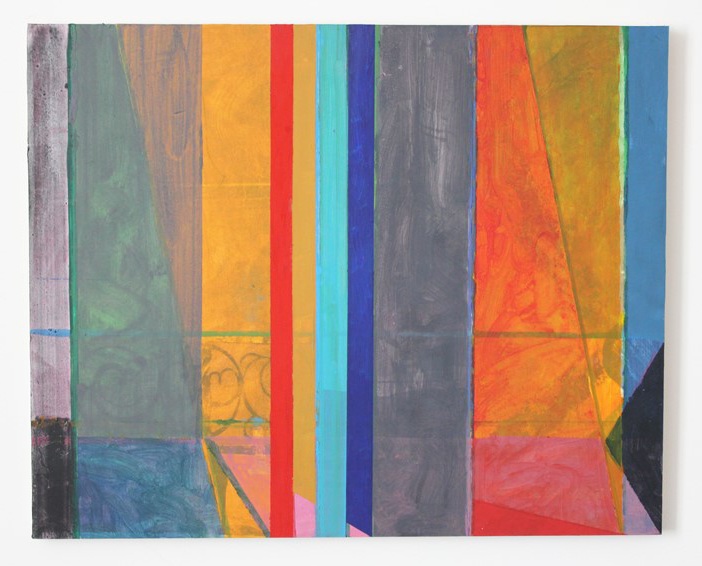
CBP: Can you discuss how your works relate to each other, in the making of the work in the studio and on display in an exhibition?
SS: I number each work of the different mediums I work in so I know the chronological sequence. I always work in series, for example last year I set myself a target of making 30 pastels in 10 days. 3 a day was the target that I kept to. So there are ongoing relationships between the works and I would hope that within the overall mediums I work on, paintings, pastels, monotypes, works on paper and collages that there is a ‘difference’ but also a continuity.
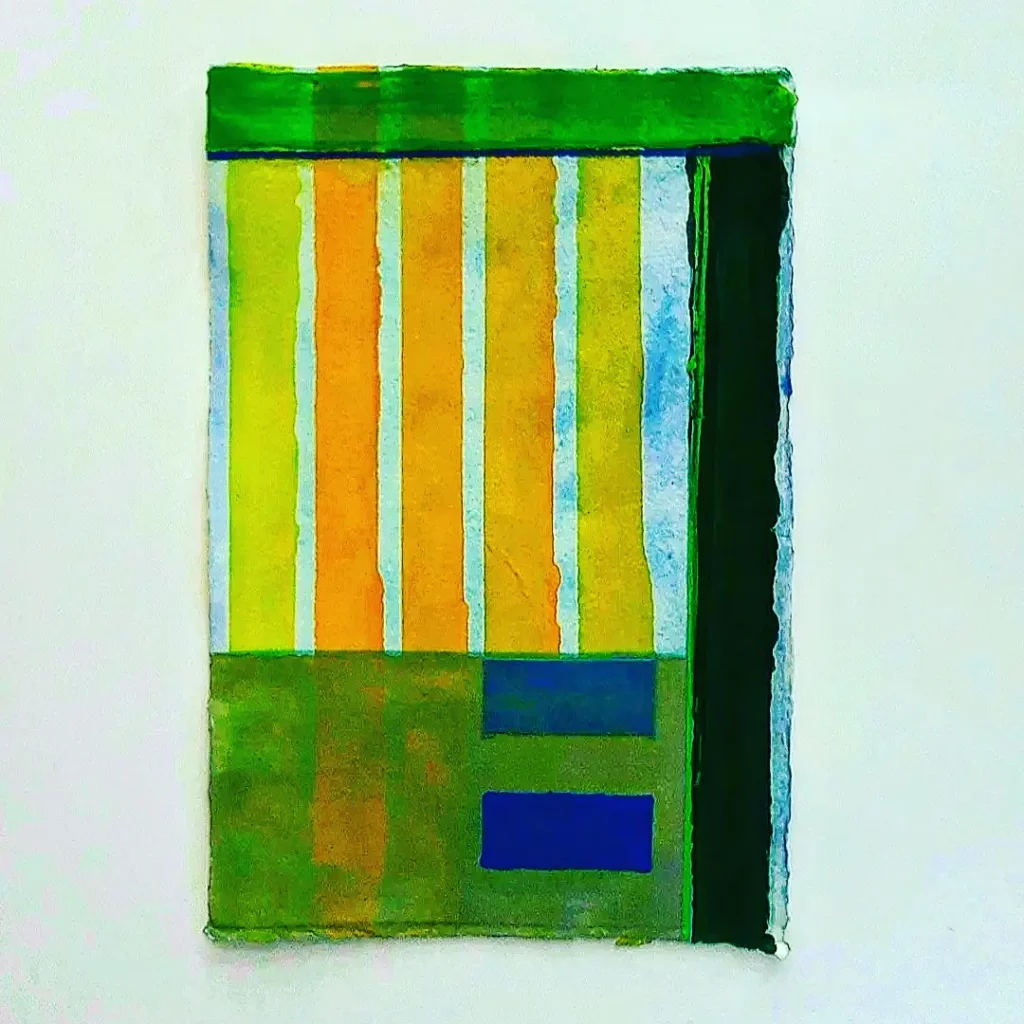
CBP: Can you talk about how you employ scale in the making of the work and the viewers encounter with it as an object and the pictorial elements within the work?
SS: Being the pragmatic person I am I know the size of the largest painting I can get in my car – so at the moment I restrict myself to that maximum scale. I have plans to make larger scale work in the future. I want the viewers to look at the work not as an ‘object’ but as an image. I am old fashioned in that I still believe that the viewer can ‘look’ at an ‘image’ and build a relationship and meaning from that experience.
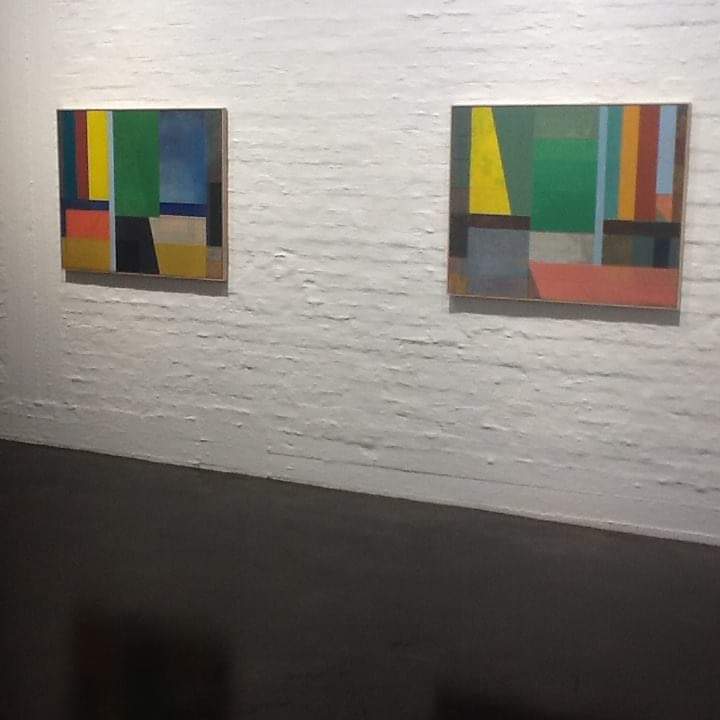
CBP: How has making work for the Artists Support Pledge scheme influenced your painting practice and work developed over a longer duration?
SS: The ASP has not influenced what I make except to say that in 2020 when I joined ASP I used my back catalogue of small works to promote on ASP. I then realised that I needed to make new work and this is what kick started making small paintings on gesso cradled panels and pastel drawings. Some of these small works I will use as ‘studies’ for larger works. But certainly what has been wonderful is to connect with so many more artists on Instagram and be part of that community.
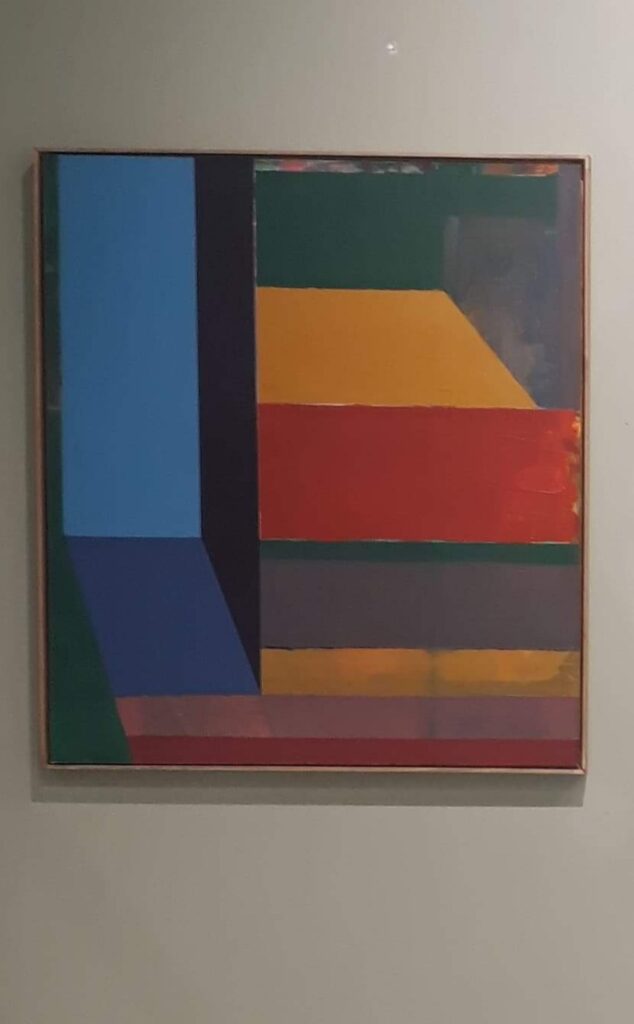
CBP: How do you balance your painting and studio time with your role as Director of a major publicly funded art institution The New Art Gallery Walsall?
SS: I am well organised and can compartmentalise what I am doing at any particular time. When I am in the studio I don’t worry about funding, staffing, building, programme or anything else apart from what is in front of me. And I don’t watch soap operas.
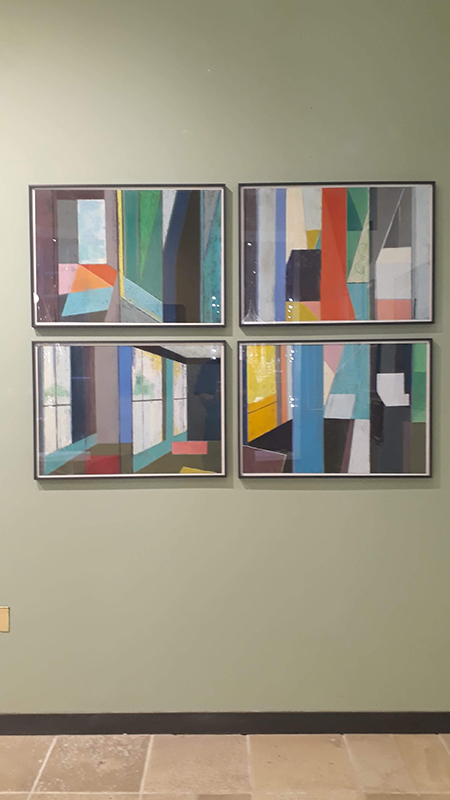
4 Pastels, 50 x 70cm, 2019 at Paul Smith, Albermarle St, London, Feb 2020 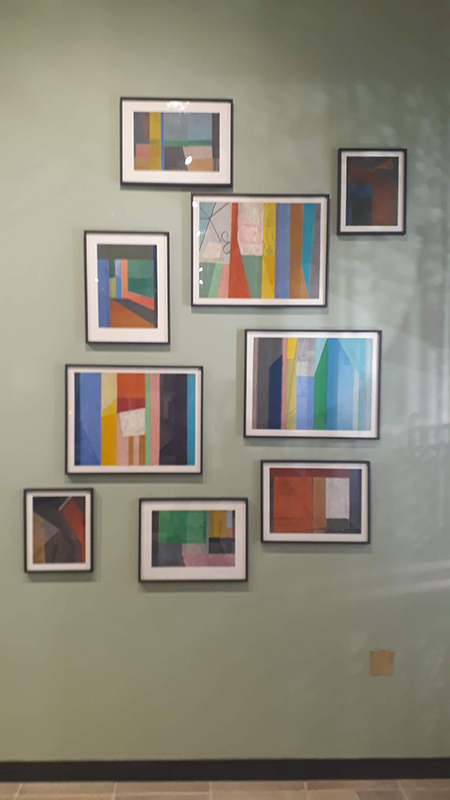
Wall of Pastel drawings at Paul Smith, Albemarle Street, London, Feb 2020
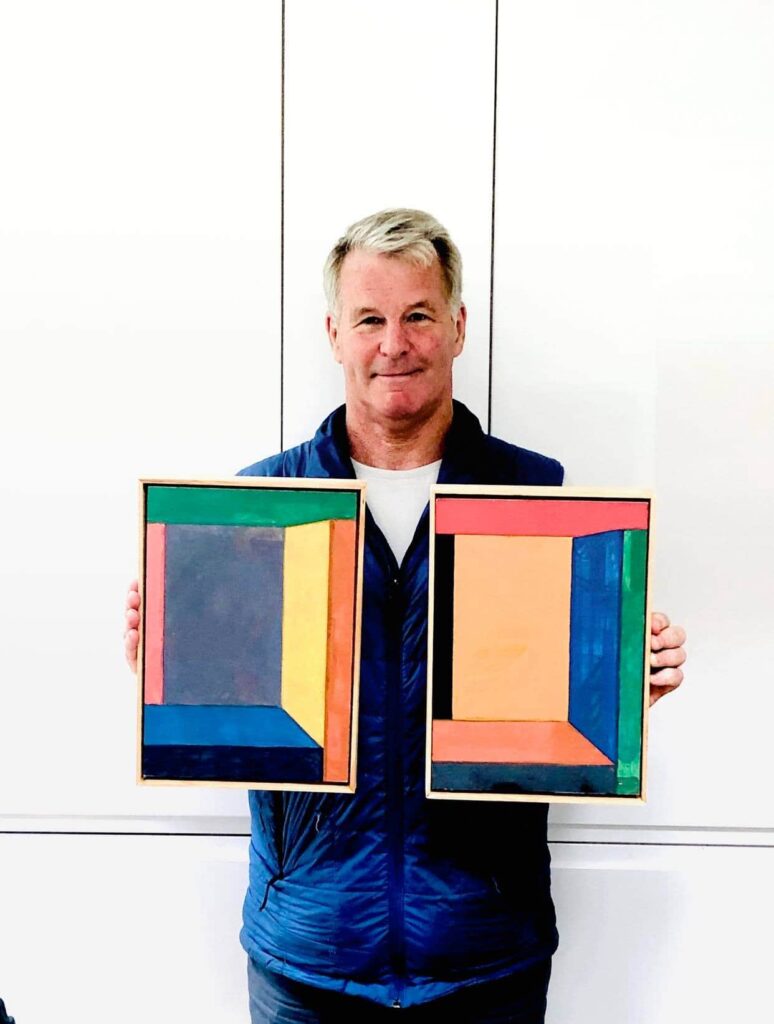
Stephen Snoddy was born in Belfast, NI and studied at Belfast College of Art graduating with an MA in Fine Art before moving to Manchester in 1986 to complete a postgraduate in Museum Studies. From 1987 he has worked in various Gallery’s across England and had a successful directorial and curatorial career working with such artists as Bruce McLean, Richard Long, Annette Messager, Rita Donagh, John Baldessari, Richard Wilson, Elizabeth Magill, Jochen Gerz, Giuseppe Penone, Christopher Le Brun, Gillian Ayres and many others. In 2013 he began painting again and has had solo exhibitions in Brussels, London and Southampton CAG and he has been shortlisted for the Young Masters Awards in 2017 and the Greater Manchester Artists Award in 2019. His work is in private collections in the UK, USA, Norway, Spain, Belgium, Ireland, Portugal and South Korea and in Southampton CAG, University of Ulster and Open University and Yantai Art Museum, China.
Stephen Snoddy is an internationally renowned curator and gallery director who is currently Director at The New Gallery, Walsall.



